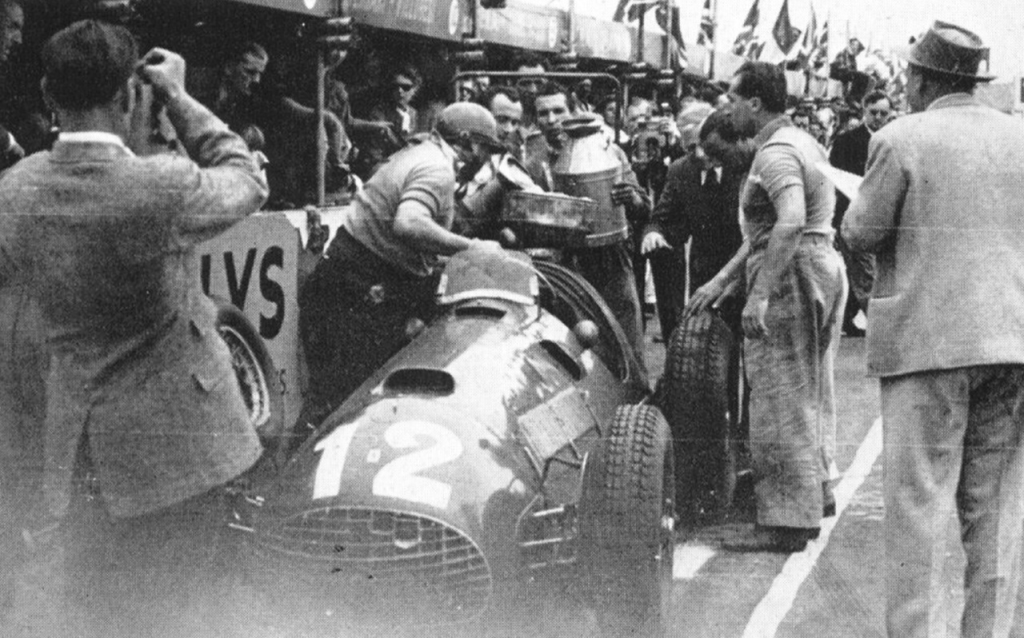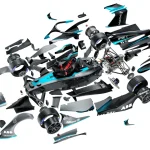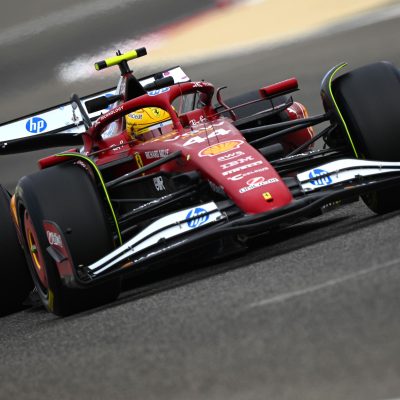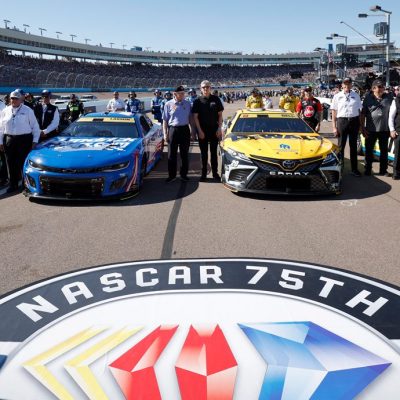In the high-octane world of motorsport, speed isn’t just measured on the straights. It’s also measured in milliseconds at a standstill. The pit stop — a moment that can make or break a race — has evolved from a gritty, hands-on chore into a choreographed symphony of engineering precision and technological brilliance.
From the hammer-and-hope era to today’s sub-two-second tire changes, the evolution of pit stop technology is one of motorsport’s most fascinating stories — where hardware, software, and human reflexes collide.
🏁 Act I: The Age of Mechanics and Muscle (1950s–1970s)

In the early days of Formula 1, endurance racing, and even NASCAR, pit stops were long, laborious affairs. Picture it: grease-smeared mechanics wrestling with tires, jacks operated by brute strength, fuel being poured by hand into open tanks.
- Average pit stop time: 60–90 seconds
- Tools of the trade: Manual jacks, handheld wrenches, guesswork fuel gauges
- Roles: A few mechanics, no helmets, often in casual overalls
During this era, pit stops were primarily about refueling and repairing, not strategy. Tires lasted much longer, and aerodynamics hadn’t yet entered the picture. Watching a car pit was like watching a blacksmith at work — sparks, smoke, and plenty of shouting.
Key innovation: The introduction of the air jack system in the late 1960s — built-in pneumatic systems that could lift the car in seconds — started to change the game.
🧪 Act II: The Era of Strategy and Specialization (1980s–1990s)

As teams became more professional, pit stops evolved from crude necessity to crucial race strategy. Suddenly, it wasn’t just about fixing — it was about winning time.
- Average pit stop time: 10–20 seconds
- New tech: Pneumatic wheel guns, refined fuel rigs, standardized pit equipment
- Crew roles: Specialized members for each wheel, dedicated fuelers, lollipop men
This period saw the rise of team choreography. Each crew member had a single job: one man for the left-front tire, one for the right-rear, another with the fuel hose, and so on. Teams practiced for hours each week, shaving milliseconds like sculptors chipping at marble.
And suddenly — refueling became strategy. Teams could underfuel cars to make them lighter and faster, then pit more often. It was chess at 300 km/h.
Iconic moment: In 1993, McLaren introduced real-time pit stop telemetry, allowing engineers to monitor and optimize stops on the fly — a glimpse into the data-driven future.
⚙️ Act III: The Sub-3-Second Revolution (2000s–2010s)

If the ‘90s were about refining pit stop choreography, the 2000s were about squeezing every millisecond out of it.
- Average pit stop time: 2.5–5 seconds (in F1, sub-3s by 2010s)
- Refueling banned (in F1): From 2010 onward, stops became purely for tires
- Precision tech: Torque-controlled wheel guns, laser alignment, real-time data streams
Teams began pushing into aeronautic levels of coordination. Every movement was analyzed with slow-motion video, biometric feedback, and motion tracking. Pit crew members were selected like athletes — trained for power, reaction time, and consistency.
Key innovation: The “traffic light” pit release system, replacing the lollipop man with automated sensors to detect when it’s safe to rejoin the track.
In 2016, Williams Racing set a new benchmark: a 1.92-second pit stop. That’s quicker than it takes to blink. That was no longer a stop — it was a momentary pause in time.
🧠 Act IV: The Digital Pit Stop (2020s–Present)

Today’s pit stop is a fusion of man, machine, and algorithm. Every aspect is connected, measured, and optimized through digital telemetry, AI, and robotics.
- Average pit stop time (F1): Around 2.3–2.6 seconds
- Maximum crew (F1): 20 people around the car
- Gear: Infrared tire temp sensors, real-time analytics, predictive strategy software
Before a car even enters the pit lane, engineers have already simulated dozens of scenarios. AI tools process data on tire degradation, weather, traffic on track, and even a driver’s braking patterns to predict the perfect stop window.
In endurance racing, pit stops have their own tech ecosystem:
- Hybrid power systems require complex software calibration mid-race
- Brake disc changes in under 10 minutes
- Night vision systems for visibility in dark conditions
- Electric cars like those in Formula E have eliminated fuel stops entirely — swapping batteries or relying on ultra-fast charging
F1’s next-gen vision? Entire pit stops directed by machine learning, using predictive models to decide when and how a car should pit — with the possibility of robot-assisted tire removal and installation.
🔍 Anatomy of a Modern Pit Stop
Let’s break down what goes into an elite-level Formula 1 stop today:
- Pre-pit prep: Engineers run simulations; crew takes position
- Approach: Driver aims for exact centimeter-perfect positioning
- Stop: Car lifted in under 0.3 seconds by integrated air jacks
- Tires off/on: Four tire changers, four tire carriers, four wheel gun operators
- Drop & go: Car back on the ground in less than a blink
- Release: Infrared sensors and stoplight system give the green light
All of this — often in under 2.5 seconds. A modern pit stop is precision surgery at 200 km/h.
🏎️ What’s Next? The Pit Stop of Tomorrow
The future of pit stops will likely be shaped by three key forces:
1. Electrification
Electric series like Formula E have already done away with traditional fueling. But as ultra-fast charging evolves, pit lane power boosts could become part of the show — imagine strategy revolving around a 30-second battery top-up.
2. Automation & Robotics
Some endurance teams are experimenting with robotic arms to assist in wheel changes or refueling. Fully automated pit stops might be decades away, but co-bots (collaborative robots) could become crew members.
3. Augmented Reality (AR) and AI
Pit crews may one day wear AR visors, overlaying real-time torque readings, tire temps, and optimal tightening pressure. AI will continue to drive decisions — and perhaps even adjust during the stop.
🏁 Final Thoughts: Still Human at the Core
For all the carbon fiber, telemetry, and robotic finesse, there’s one thing that hasn’t changed: the human element.
The pit stop remains a human ballet — 20 people moving in harmony, guided by training, muscle memory, and split-second instinct. The difference between victory and defeat is often measured not in horsepower, but in heartbeats.
Technology has changed everything — except the stakes.
From the smoke-filled paddocks of the 1950s to today’s lightning-fast tire ballets, the evolution of pit stop technology tells a deeper story: about how motorsport is always chasing the edge of possibility. And somewhere, in the heat of a race, under pressure, in two seconds flat — the future is always arriving.










